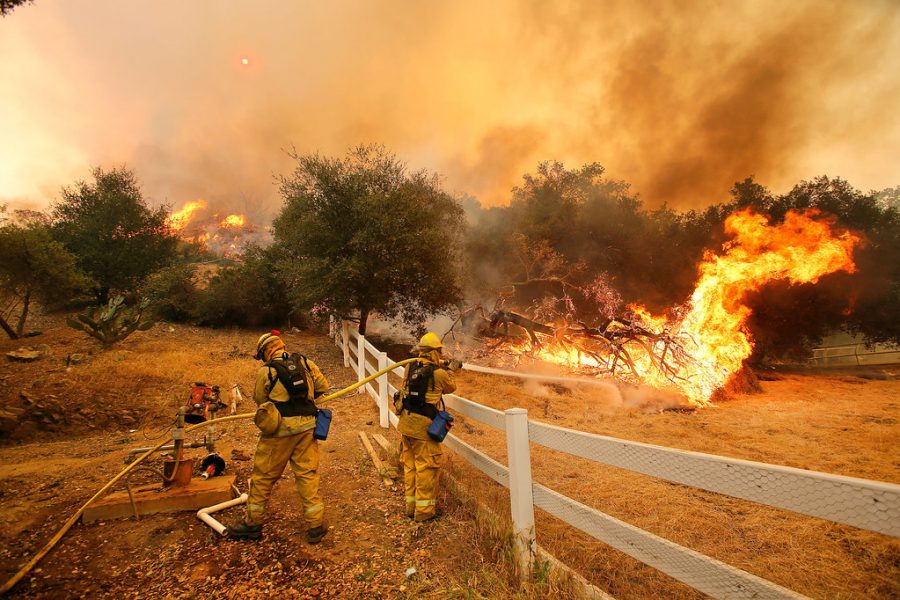Reports indicate climate change is a true threat
Dowsing water into the air, these firefighters in Stockton, California attempt to prevent a wildfire from diverting towards people and property. Extreme weather such as fires and hurricanes have become more frequent in recent years partly due to changes in the environment.
December 18, 2019
Overwhelming evidence that climate change is real was recently published within the fourth National Climate Assessment (NCA) that referenced data from governmental agencies such as the EPA and NASA. Nearing the one-year anniversary of this often downplayed report, it is time for a reminder that extreme global change is occurring right now. Record-breaking temperatures, humidity, and rising sea levels contribute to the summarization that our planet is warming faster than at any other point in modern civilization. The document also states that the severity of future impacts will depend largely on actions taken to reduce greenhouse gas emissions and make an effort to use renewable resources. Many young people and teenagers, like activist Greta Thunberg, are strongly worried about the future of our planet as continued predictions and reports unanimously agree that Earth is in jeopardy. Eleven percent of the world’s population is vulnerable to the effects of climate change such as droughts, floods, heat waves, sea level rise and other extreme weather events. A separate report made by the U.N. stated that 1 million of the 8 million estimated animal and plant species on Earth were in jeopardy of becoming extinct due to global temperature change.
A number of key global threats were outlined, from humans use of land and sea resources to challenges posed by pollution and invasive species. This includes bees located in southernmost habitats, who have noticeably shrunk in numbers and have lost 200 square miles of their liveable range. Pollinators contribute $24 billion to the U.S. economy and farmers, helping in the creation of a third of the total food consumed by Americans, including honey and the majority of fruits. By the end of the 21st century, the Southeastern United States including the Carolinas will likely lose over half a billion hours of labor due to extreme heat. The NCA unfortunately has more troubling news for farmers. The quality and quantity of their crops and livestock will decline across the country due to higher temperatures and environmental changes. Junior Hunter Crute weighed in on the biggest impact climate change would have on the future: “Because ocean surface levels are rising at such a rapid rate, people that live in coastal cities like New York and Miami may have to move further inland for safety.”
Few large scale measures to reduce the impact of man-made climate change have been considered a success in our country. President Trump announced plans from the 2015 Paris Climate Agreement shortly after his inauguration even amid widespread criticism from Democrats and a small percentage of Republicans. Under the terms of this Obama-signed treaty, America would have been tasked with reducing our global carbon footprint and emissions by 32 percent within the next decade (2030). This is a part of a global effort by 186 countries within the agreement to limit global temperature averages from rising by more than 2 degrees Celsius (3.6 Fahrenheit) over the next century. The much talked about Green New Deal also failed to gain much traction in Congress with legislators, citing unrealistic goals and harmful carbon tax regulation. While it may take a larger effort to truly keep our planet safe for ourselves and future generations, being more environmentally conscious on a day to day basis will only help. Easy changes students can make, like recycling paper and cardboard, taking faster showers, and using eco-friendly light bulbs can add up if everyone at Millbrook does their part.












